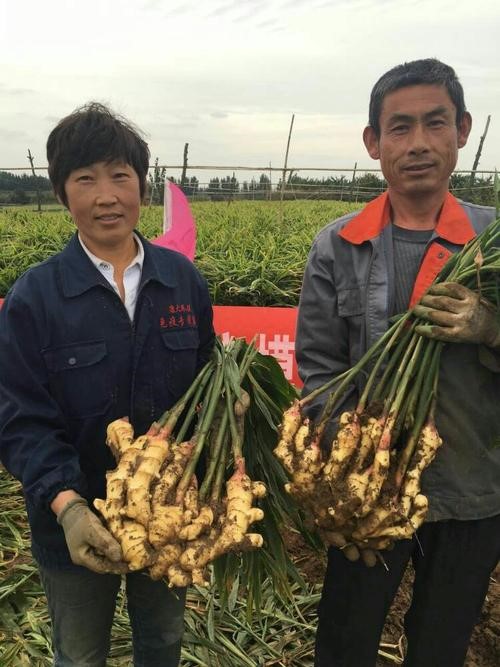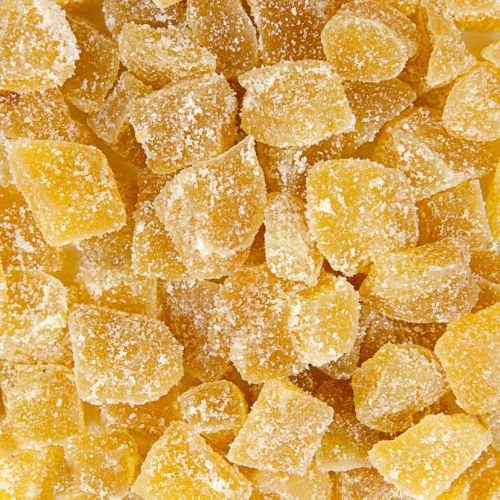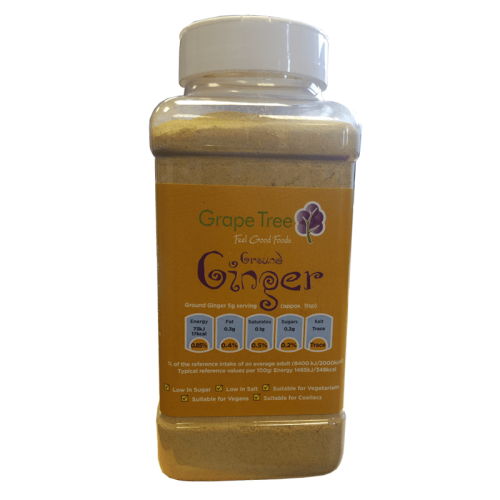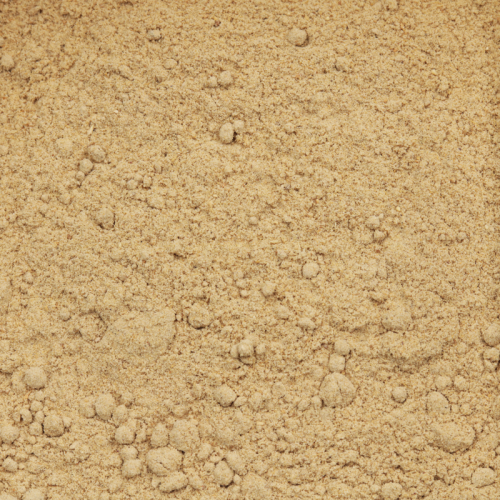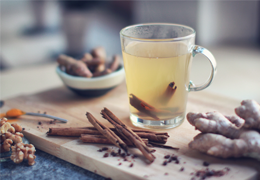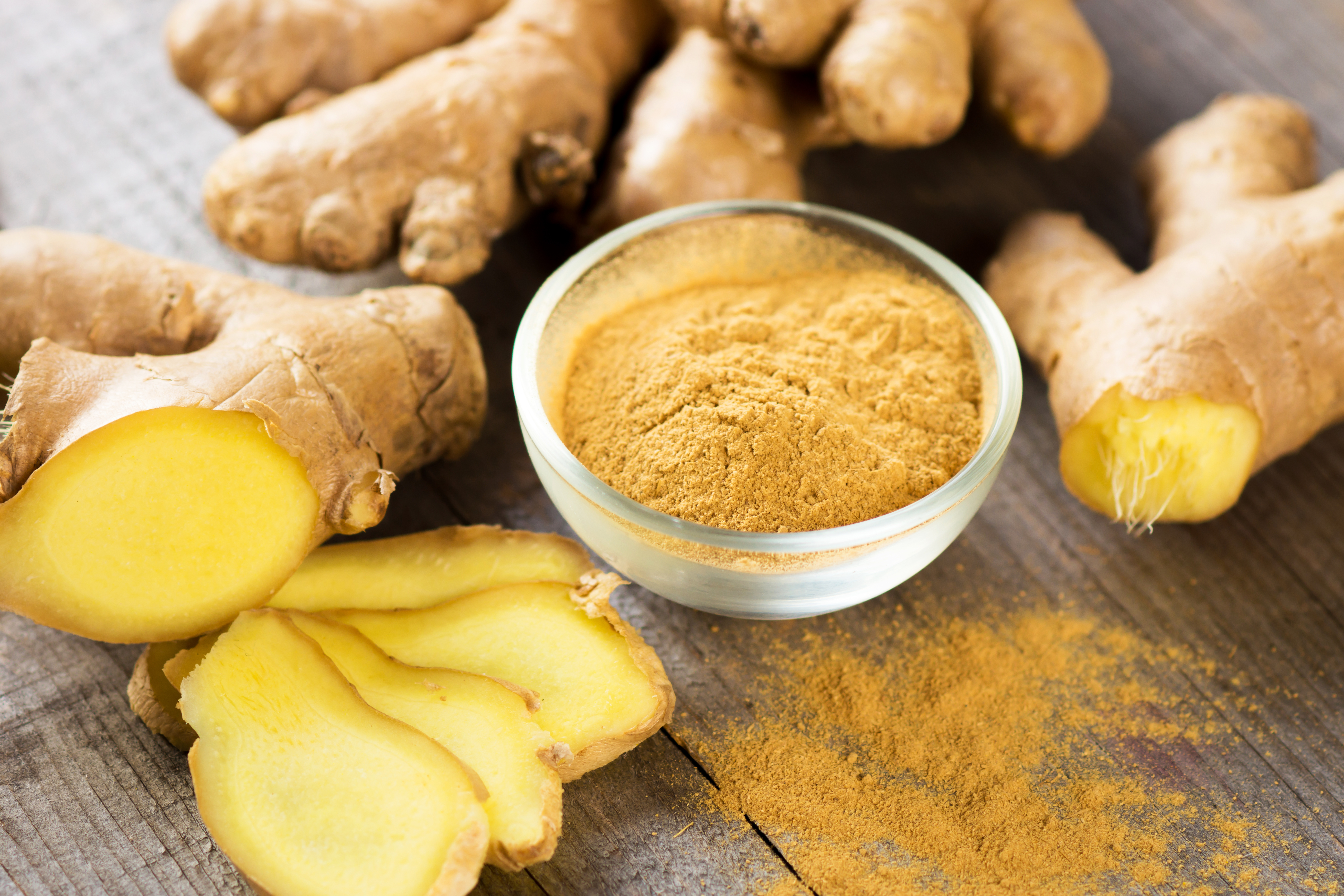
Photo Credit: "© [Daniel Vincek] / Adobe Stock
It conjures up the very essence of Christmas, but ginger also packs a powerful health punch all year round.
In the run up to the festive season is there a scent that can better summon up those cosy winter days than the delicious smell of gingerbread?
Gingerbread figures, houses, iced decorations and crystallised ginger atop delicious family favourites mean just one thing… it’s Christmas, well almost!
But what about the warming ginger at the heart of our collective memory and what is its story?
The ginger that makes its way to our Grape Tree stores across the UK whether dried, ground, or crystallised, mostly comes from China. More than one million tonnes is grown there each year.
The Chinese have used ginger as a digestive aid and anti-nausea remedy for more than 5,000 years.
And in the temperate areas of the provinces of Shandong, Fujian, and Guangxi the climate is so good that it grows fast enough to be harvested twice a year, though the main crop is in September.
Although the ginger plant grows up to a metre tall and has a dark green shock of leaves it is its underground network of roots, known as rhizomes, that make it so special.
Ginger can be harvested either by hand or mechanically, or a combination of the two.
It is then transported to the factory for processing. It is peeled, cooked, infused with sugar, and dried.
Only when it is dry is the ginger then chopped or ground into its various forms, shapes, and sizes. The more specialised shapes are usually created by hand.
Once it has been through this process is it ready to be shipped from the port of Xiamen.
The journey, through the Suez Canal and on to Rotterdam before arriving at Felixstowe, can take up to 30 days. From here it is transferred to warehouses across the UK ready to be shipped to Grape Tree and ready for our customers.
Where your Grape Tree ginger comes from
- The ginger is picked in Shandong, Fujian, and Guangxi.
- It is shipped to the factory where it is preserved in a sea salt and citric acid solution for a year.
- The ginger is then cut and dried adding 25 days to the process.
- It now undergoes a 14-day syrup treatment before being oven dried for 16 hours.
- From the port of Xiamen the ginger heads for the Suez Canal and Rotterdam.
- Six to eight weeks later it arrives in Felixstowe.
Here are just five health reasons why ginger is so good for us and why it has featured in remedies for thousands of years:
Soothe nausea and morning sickness: ginger has been shown in a review of 12 academic studies to help improve the symptoms of morning sickness in pregnant women. It has also been shown in a separate study to assist with the nausea associated with chemotherapy treatment, however more research is needed in this area.
Alleviate cold and flu symptoms: made into a warming tea, ginger is a great choice when you first feel the onset of a cold. It induces perspiration which cools the body.
Digestive aid: multiple studies have shown that ginger can speed up how the stomach empties helping with chronic indigestion and recurring stomach discomfort.
Protect your mouth: the compounds in ginger can also reduce oral bacteria which can lead to cavities and gum disease making it an effective element in oral health regimes.
Help with osteoarthritis: researchers collaborating in Copenhagen, California and Nottingham found in independent trials that people who used ginger to treat OA experienced a reduction in pain and discomfort. Ginger’s potent anti-inflammatory ingredient gingerol is believed to lie behind this potential health benefit.
FASCINATING GINGER FACT
In In the 13th century a pound of ginger cost as much as a sheep.
WHAT’S INSIDE 1 tablespoon serving of ground ginger provides:
- 17 kcals / 72 kJ
- 5g protein
- 72g carbohydrate
- 7g fibre
- 69mg potassium
- 11mg magnesium
RECIPE!!
GINGERBREAD
INGREDIENTS
75g butter
3 1/2tbsp golden syrup
60g light soft brown sugar
175g plain flour
1/4 tsp bicarbonate of soda
2tsp ground ginger
METHOD
- Add golden syrup, butter and sugar to a pan and heat until dissolved.
- In a bowl mix flour, bicarbonate of soda and ginger then stir in the sugar and butter mixture to form a dough.
- Wrap in clingfilm and chill for 30 minutes.
- Lay dough between sheets of baking parchment and roll it.
- Using a cutter, create your shapes.
- Bake at 190C (mark 5) for 10- 12 mins until lightly golden brown.
- Leave to cool and harden on a cooling tray.
- Decorate with icing.
